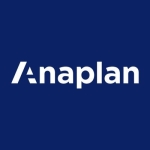What is our primary use case?
I am into tax automation. My clients have their data sets in different ERPs, such as Oracle and SAP. I design workflows in Alteryx to pull data from different sources, transform it into a nice layout, and perform data validations. We have 30+ tax registrations in other countries. This is important because tax data must comply with regulations in different countries.
I also develop pre-agreed adjustments to the client's data and push the data sets into another system through APIs and SAPPs. From there, I can produce the tax returns and valuation outputs, which I present to the clients in a dashboard.
What is most valuable?
Alteryx is a low-code platform, and that's the biggest reason why we chose it. It can also manage a lot of datasets, and everything happens in fractions of seconds.
Tax returns usually take a day or two for a human to prepare because they involve a lot of data and a lot of checks. But with Alteryx, everything is very fast. It's also easy to develop and deploy solutions on Alteryx.
We used to hire people to just prepare tax returns, and they would work on them for hours. But now everything is happening using Alteryx, so our employees can focus more on the consulting side of tax.
What needs improvement?
I don't see a huge downside. Because if there is a strong leader with some good architecture knowledge, they should be able to cut down most of the downsides.
However, there are a few limitations. For example, if you just leave the workflows to the developer, they may not properly document or organize the workflows. And then, if they're not organized, it's very difficult for another person to pick them up.
Another downside is that two professionals can't work on one workflow at the same time. Let's say I have a huge workflow, and someone needs to support it. All I can do is virtually connect and share my screen, or I have to be with them together to look at the workflow and make updates.
So the downsides are very few. But if you're more organized and have a dedicated architecture for your own solution, that will reduce a lot of downsides.
But there are a few minor problems. For example, we can't browse multiple files. When we deploy a solution on a gallery, let's say I have ten different files, and I have to upload them all at once. This is something that's difficult in the gallery. So case by case, I see some downsides, but often we do something alternative.
And then, recently, I came across one biggest downside. There's something called the Download Tool, which is used to push datasets over an API. If you have API credentials, you can configure them in this Download Tool. But I noticed that this Download Tool has a limited capacity. That means it can only push, like, X amount of values or X amount of strings, but it cannot push a huge amount of dataset. For that, I have to deal with the Python port again. So, that's a bigger downside, which I recently came across.
In future releases, I would like to see Alteryx improve the connectors. Since Alteryx is a low-code platform and even our developers might not have extensive coding knowledge. If there's a possibility to enhance the connectors, it would be truly valuable. By connectors, I mean that I have come across some instances where these connectors incorporate a sort of programming language that could augment Alteryx's capabilities. This way, we could utilize these connectors instead of having to create a separate solution. For instance, if I intend to extract or transmit data from SFTP to Alteryx, it would be beneficial to have a pre-developed connector accessible within the community.
Take the Power BI connector, for example. It's important for this connector to be consistently maintained. I'm aware that these types of connectors are already accessible within the community, but there are instances when they function as intended and times when they do not. Would it be possible to have a centralized repository where these connectors are regularly updated to align with the most recent versions? This would indeed be highly advantageous. I understand that it entails a significant amount of maintenance work.
Nonetheless, given that Alteryx operates as a low-code platform and we frequently encounter a variety of challenges, we aim to minimize the need to engage additional resources such as Python or Java developers. Relying on such external dependencies can introduce complexities. Therefore, if Alteryx could introduce more connectors of this nature, it would be a substantial improvement.
APIs and connectors play a pivotal role. In particular, we have numerous scenarios where I had to leverage APIs and SSEPs.
For how long have I used the solution?
We have been using Alteryx for more than three years. I also have experience developing end-to-end solutions using Alteryx.
We don't use the latest version because the latest version has a lot of updates and release notes, especially for updating the server and the logic in the containers. Moreover, the problem is, we have to sync the Designer version with what is on our gallery site. So once our gallery is updated, then we will update our license.
Buyer's Guide
Alteryx
October 2025
Learn what your peers think about Alteryx. Get advice and tips from experienced pros sharing their opinions. Updated: October 2025.
872,029 professionals have used our research since 2012.
What do I think about the stability of the solution?
The solution is usually stable. All the tools work as expected, and we haven't faced any major problems. If you have a developer with good domain knowledge and some technical knowledge, then there shouldn't be any issues.
What do I think about the scalability of the solution?
In terms of scalability, Alteryx is good, especially within our domain, where tax data is generally not excessive. It can handle a large number of transactions and data sets.
Although there are instances of large datasets, we have yet to encounter any issues with scalability. So, at least within our domain, scalability doesn't pose a concern.
Currently, there are 15 users who are continuously using Alteryx. We also have 3-4 developers, and I lead the tech team in our organization.
How are customer service and support?
The customer service and support are good. I've found that if I post a question on the Alteryx Community, I usually get a response within a day. I've only had one issue with the "Download Tool," but other than that, I've been very happy with the support.
How would you rate customer service and support?
Which solution did I use previously and why did I switch?
KNIME is one of the tools I'm familiar with. It's an open-source tool, you know. However, the distinction I observe between Alteryx and KNIME is that Alteryx is like to an iPhone, providing a more secure and protected environment. This is unlike KNIME, which can be compared to an Android. This differentiation is why I advocated for my team and organization to adopt Alteryx over KNIME, irrespective of cost savings or other considerations.
Alteryx is indeed more secure than KNIME. KNIME, on the other hand, is essentially an open solution.
So, when it comes to ETL tools, Alteryx stands out as a more secure solution compared to others.
How was the initial setup?
The initial setup is easy.
Moreover, deploying the solution on a gallery typically takes around five to ten minutes, perhaps even just five minutes. Most of this time is used to ensure that your dependencies are correctly saved in the designated path. That's the only check we need to perform. Otherwise, it's more or less straightforward.
It is deployed on the cloud. We have a remote tax team as well, so our users are tax professionals. The outputs are shared by these tax professionals with their clients.
What about the implementation team?
In our case, we only need a few people to deploy a solution. We have common requirements for all of our clients, so we can reuse the same architecture for tax preparation and reconciliation. This means that we don't need a large team of architects or developers to deploy a solution. Even with just three people, we can get the job done quickly and efficiently.
The number of people needed for maintenance depends on the architecture of the solution. In our case, we often opt for an architecture that stores dependencies within our database. For instance, we avoid hardcoding information within the workflows. If, for instance, there's a variable like the tax percentage that varies across different countries, we store that data in the database instead of hardcoding it into ten different workflows. This way, when the tax rate changes, we only need to update the database, avoiding the need to make changes across multiple workflows. The key is to select the appropriate architecture, which significantly reduces the maintenance workload. While some maintenance is inevitable, we typically require one or two professionals on occasion to handle such changes.
What was our ROI?
Alteryx is definitely worth the investment, but the price is too huge, especially in our geographical context. If there could be a consideration for adjusting prices based on varying currencies, aligning with their existing requirements, that would be more agreeable.
What's my experience with pricing, setup cost, and licensing?
In my opinion, it's actually quite expensive. I frequently encounter numerous students who approach me, seeking the appropriate path to undertake. I assist them in learning tools of this nature, which can equip them for extensive data manipulation tasks since they exhibit keen interest. They are very interested in learning how to use Alteryx, but the license price is too high for most students, especially in India, where I'm from.
For business licenses, I don't really care because my organization is already paying for them. They get a subsidized rate because they have also purchased licenses for other products from Alteryx. I think if Alteryx could reduce the price of licenses for students and other younger professionals, it would help them a lot. These are the people who will promote Alteryx's solutions to others.
Take me, for example. I used Alteryx in my previous company. Now I work for a different company in the US. When I first started at my new company, my team was not convinced that we needed an ETL tool. But I was able to convince them to give Alteryx a try because I had experience with it and I knew how it could benefit our company.
If Alteryx could provide licenses to younger professionals at a cheaper price, it would help them learn about Alteryx and its capabilities. This would lead to more people using Alteryx, which would benefit Alteryx in the long run.
Which other solutions did I evaluate?
I have some knowledge of KNIME, but we usually prefer working on Alteryx in our organizations.
Currently, we are only using Alteryx within our organization. Moreover, we have plans to make these solutions available to our clients as well. We plan to deploy these solutions in our internal platforms, which can trigger the workloads and provide outputs to the client. We are working on that, but for now, we are primarily developing the solution for ourselves.
What other advice do I have?
Overall, I would rate the solution a nine out of ten.
Which deployment model are you using for this solution?
Public Cloud
Disclosure: My company does not have a business relationship with this vendor other than being a customer.



















